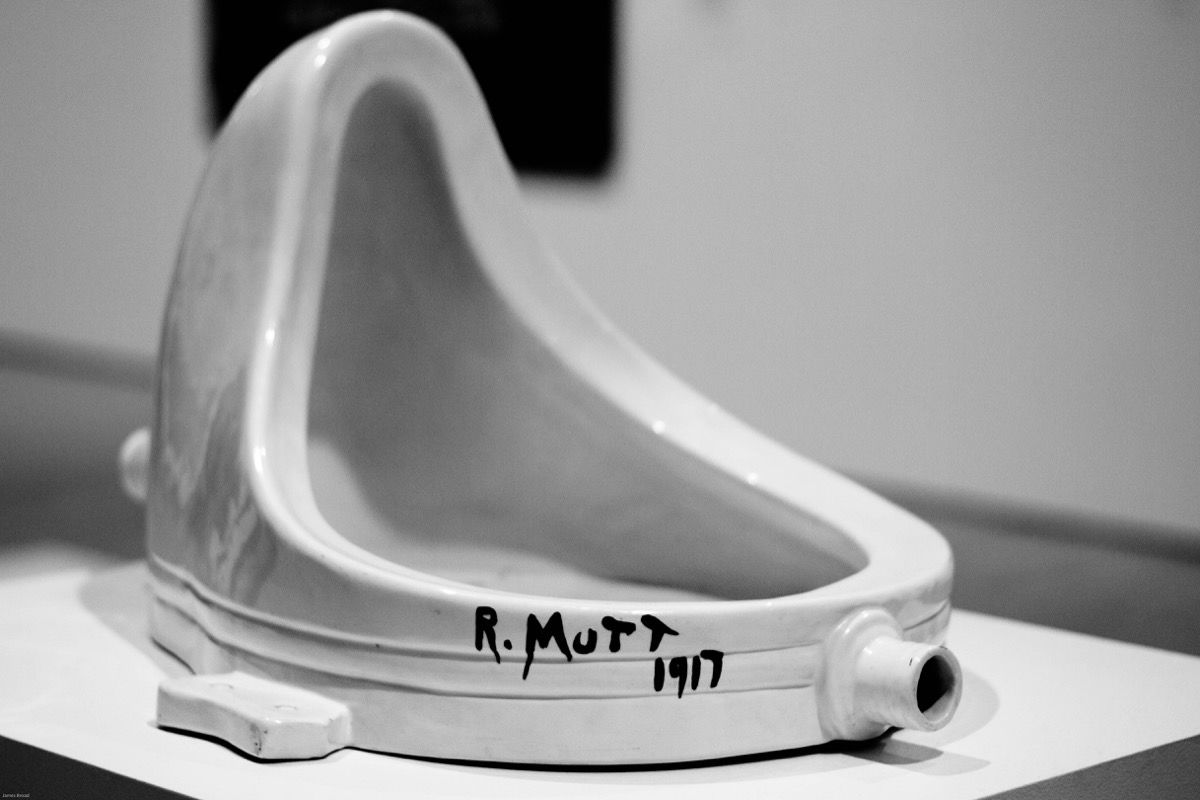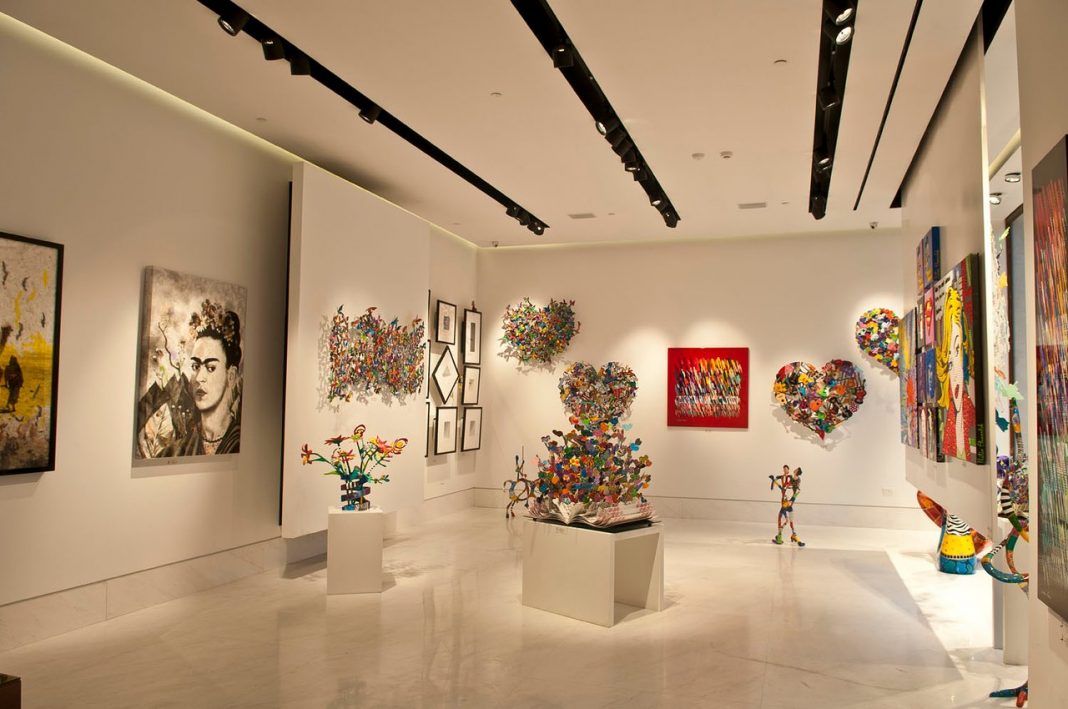Place the work of art on a heap of rubbish, and only if the accidental passerby stops and asks: “Why was the work of art dumped in the garbage?!” – then it can be considered that this work of art has successfully passed the test of belonging to art.
Of course, it’s harder to understand this when a heap of rubbish is a work of art. For example, in 2001, a cleaning lady threw the installation of one of the most expensive contemporary artists, Damien Hirst, into the garbage can. From time to time you can see such “garbage” works in outstanding galleries. So how is it that a heap of rubbish is given the status of a work of art?
The problem is that now everything can be considered a work of art. The manifesto of this new paradigm in the early 20th century was the urinal of Marcel Duchamp. In 1917, Duchamp bought a urinal from a plumbing shop and made it an exhibit in an art exhibition in New York, saying: since the urinal is presented in the context of an art exhibition, it becomes a work of art.
The further destiny of the “masterpiece” is confusing: the original urinal from the exhibition was broken without much regret and subsequently lost. Thanks to chance, however, his photograph has been preserved.
Further on, it is more and more interesting. On the wave of Duchamp’s triumph, when his manifesto was comprehended and picked up, it turned out that such urinals, which had previously been produced in mass quantities, ceased to be produced. But the ceramists still recreated for the exhibition a copy of the famous exhibit by photo. Interestingly, even after these perturbations, the object for some reason has not ceased to be considered a work of art. Later Duchamp created several dozen more “author’s replicas” for “grateful collectors”, and his legacy, as in the original version, was the very idea and drawing the author’s personal signature on the product.
Anyone can be called an artist, but that doesn’t make his creations an art yet
Developing the theme of urinals in your mind, imagine that from the exhibition the urinal returned to the public restroom, and the painted copies were installed in station toilets. Or that someone peed in the museum urinal (by the way, once it really happened with a work by Duchamp). And what is surprising is that all this will be considered art, even belonging to different genres.
If you’ve gotten to this place, there is good news for you: if you come to an art exhibition and feel cheated, relax. After all, formally now everything can be considered art – you have nothing to be ashamed of. However, we can still distinguish between art and non-art, and good art from bad art.
Grayson Perry beautifully described it all in his book “Playing to the Gallery”.
Before Duchamp, the boundaries of art were quite clear. Nowadays, the belonging of work to art and its quality are determined by the consensus of an undefined circle of participants according to vague criteria, none of which can be considered necessary or sufficient. However, when appraisers (explicitly or implicitly) begin to apply the evaluation criteria, the fog gradually dissipates. Checking heaps of rubbish is a weighty but not sufficient criterion.
So what else can increase the chances of a work being recognized as art?
First, a work of art must be created by an artist. The author must be aware that he is an artist and is engaged in art. Of course, anyone can be called an artist, but that does not yet make his creations an art. That’s an important criterion. People go into art, as a rule, not to make money, but because they can’t help but do it.
We know many artists who have left the routine of making money and have moved to the high and the beautiful. For such an act they are worthy of respect! It’s a really hard decision to make and it’s an inspiring one.
Secondly, the creative context is important. If an object is already on display in a gallery, it significantly increases the chances of being recognized as an art object. If you have seen something in a museum, be almost one hundred percent sure that it can be considered an art object. Before appearing in a museum or gallery, an artist’s work is seriously selected and assessed by experts. This selection sifts out most of the junk. So it’s very difficult to get to a museum. Unfortunately, this filter may not pass and really decent work. So, if the work has not been appreciated by critics, it does not mean that it cannot be considered art. Remember: we’re talking about the possibility that you’re not being cheated.

Thirdly, good art may or may not be fashionable. The problem is that everything fashionable sooner or later ceases to be. Strong art is serious on a deeper level. It gives the artist a chance to stay in history, although it does not guarantee financial well-being in life, as in more popular colleagues. Treat untwisted and very popular art rattles with a share of suspicion. When it comes to forming a museum collection, pop idols may be overlooked. However, the choice between eternity and “here and now” is not easy for everyone.
Fourthly, the beauty or simplicity of work is not its disadvantage. Will a work of art be a verdict on its democracy or clarity? High-ranking critics will sincerely turn their noses on the works perceived by the plebiscite. Well, they won’t! A beautiful, understandable work of art does not yet make it an artless one!
Of course, understandable works do not need art critics and curators, but there are always a huge number of works that require explanation and interpretation. Personally, I especially appreciate works that I don’t need anyone’s interpretation to perceive. I don’t like curators interfering with their hints in my inner dialogue. But don’t worry too much about curatorial texts: sometimes curators can’t even understand what they wrote the night before and what they printed in big letters before entering the exhibition. So, works may or may not be beautiful or understandable.
The fifth criterion is circulation. The circulation of real art is always limited. The bigger the circulation of work, the more it devalues. It’s not known why this is the case. It doesn’t make sense, but it works. The opposite is true: the smaller the circulation, the higher the value of the work.
A funny but working criterion for the authenticity of art is the assessment of the audience that comes to see it. The art belongs to privileged people – with a good education or a thick wallet. If such people look at something, there’s a good chance it’s art. If you see a crowd of hipsters and businessmen in expensive suits who are preoccupied or surprised to look at something, join us. They’re most likely crowding around a piece of art.
Without an audience, art is not art. And that’s one of the most important criteria. Art comes alive, it becomes art itself when we interact with it.
“My work is like a light in a fridge,” says Liam Gillick. – They only light up when there are people opening the door. Without people it’s not art, it’s something else – furniture”.
Don’t be afraid of the galleries. You’ll meet wonderful people there, with whom you’ll light up the artwork.

























